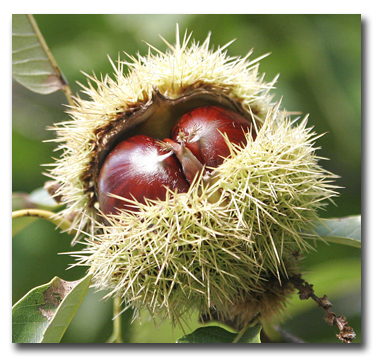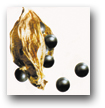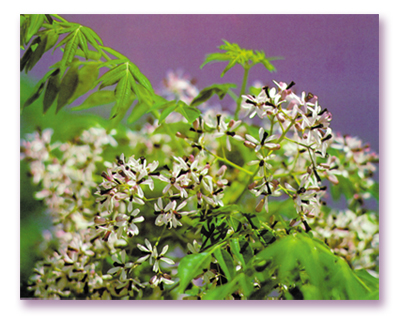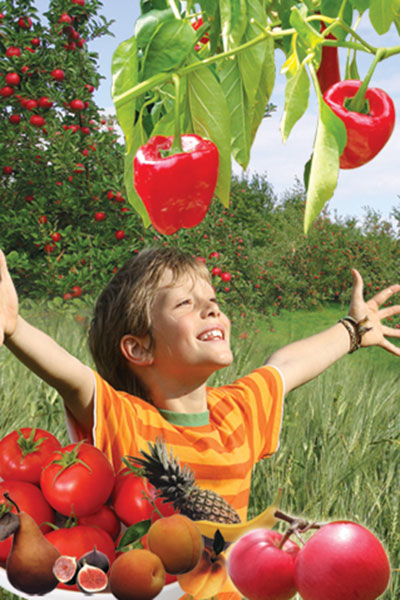Section 5: Resilience of Plants and Seeds
Is He Who creates like him who does not create? So will you not pay heed? If you tried to number God’s blessings, you could never count them. God is Ever-Forgiving, Most Merciful. (Qur'an, 16:17-18)
Every plant is created to suit the climatic conditions where it lives. For instance, plants in arid zones have characteristics that others in temperate climates lack. For this reason, plants from an arid region can’t be expected to survive in tropical forests and conversely, a plant from tropical forests cannot live in the Arctic, because all of a tropical plant’s characteristics, such as leaf size and seed resilience, are suited to that region’s particular climate. However, some plants show an amazing ability to withstand unexpectedly harsh conditions. Plants should be able to survive hot weather, drought, violent rainfall or severe cold. Some plants manage to withstand such unexpected conditions by going into a form of dormancy.
 |
|
An aquatic plant cannot live in the desert, nor can a plant suited for a dry climate live in the rain forest. Each of the plants pictured is created to live in different climatic conditions.
|
Dormant Phase in Seeds
 |
|
An embryo protected by a waterproof overcoat can sometimes travel far from the mother plant, in a dormant state throughout this journey. For example, even when the horse chestnut and the soybean reach their destinations, they can stay dormant for months. However, the seed requires this waiting time, which is brought about as a result of complex processes. This strategy ensures that germination will start at the most propitious time and in the right environment, because once it begins, there is no going back. If the external conditions are unfavorable, the delicate young seedling cannot survive. The seed's dormant stage helps lessen this risk.
|
As mentioned above, the seeds of some plants have the little-known characteristic of being able to withstand very harsh conditions. These seeds become more resilient to periods of adverse environmental conditions by deliberately slowing down their metabolic functions and going into a kind of deep sleep.
The first stage of dormancy starts with a drying phase: The seed loses fluid from its tissue. The living tissues of a plant consist of 90 to 95% water, but the water content of dormant seeds ranges from 5% to a maximum of 15%. This drying-out process takes place in a defined sequence under genetic control. The principal agent in this process is abscisic acid,43 one of the hormones that stem the growth of the plant and whose presence also slows the inner functions of the seed. Respiration is reduced in the cells of a dormant seed, and it can neither feed nor grow.44
Some seeds can stay dormant for decades or even hundreds of years before germinating – to ensure the survival of the species under severe conditions.45
How has such an important feature appeared? When conditions become adverse, how can seeds beneath the soil be aware of this and take the necessary precautions? A seed has neither eyes, nor a clock, nor a nervous system. So how does it calculate that it is time to go dormant?
Evolutionists try to explain that some plants have ensured their survival this way with claims like, “Plants have developed mechanisms to guarantee their survival under difficult conditions.”
But this sentence expresses nothing meaningful, because of course it is not feasible for a tree to feel such a need of its own accord and to think up a system whereby its seeds can go dormant, set up this mechanism in itself and then encode the necessary genetic information in its cells so as to transfer this information to future generations. Such an assertion is unscientific as well as irrational.
Another story the evolutionists spin goes like this: “In the evolutionary process, every variety of plant obtained data on environmental conditions and loaded it into its memory. This information was condensed and coded in the genetic material. Seeds acquired the ability to 'recognize' that the seasons follow one another, the kind and quality of the soil, whether running water and competitive species are nearby, and whether there’s a space enough for them to spread out.”46
Giving a little thought to the above statements, you can easily see that these hypotheses are also extremely illogical. A plant has no memory for it to load environmental data into. How is a plant, not even aware of the genetic material it possesses, to add new information? Besides, a plant is not intelligent or even conscious, so how can it “recognize” its environment? Such assertions are nothing more than fairy tales concocted by evolutionists reluctant to admit that plants have been created by God.
There is another way of seeing evolutionists’ claims as untenable. According to their assertion that plants have acquired their characteristics as a result of coincidental changes over time, millions of years must have passed before plants acquired the ability to let their seeds stay dormant. In the meantime, plants must have endured adverse conditions for so many long years. But no plant can withstand such hardship! Once a seed has begun to germinate, it cannot survive if conditions are negative.
Under such circumstances, the first seed to encounter harsh conditions would need an extraordinary coincidence (it would be better to call it a miracle). To anyone with common sense, it’s obvious that such could not be possible. Information could not be added to a plant’s genetic code, even if you wait millions or trillions of years. Seeds cannot acquire dormancy or any other characteristic by coincidence – the only alternative that evolutionists put forward.
Plants, and the seeds that produce them, have been created perfectly by God, together with all their present-day characteristics.
Is He Who creates like him who does not create? So will you not pay heed? If you tried to number God’s blessings, you could never count them. God is Ever-Forgiving, Most Merciful. (Qur’an, 16:17-18)
The Lupine’s Ability to Forecast
 |
|
The lupine produces seeds (below) that can survive for years in frozen ground without spoiling.
|
The lupine, native to the Artic tundra, can predict the weather. And accordingly, if the conditions will be unfavorable, it does not germinate and waits underground in a kind of dormant state for the weather to improve.
The seeds of this plant can grow only in the warm weather prevailing at certain times of the year. When the seeds sense that it’s not warm enough, a miracle happens: Even if other environmental conditions are suitable, the seeds in the frozen earth await warmer temperatures. When all the conditions are right, no matter how much time has passed, then the lupine seeds start to develop. Indeed, lupine seeds have been discovered that have waited in fissures in rocks hundreds of years without germinating or rotting.47
Since the seed has undergone certain changes as though aware of events in the external environment, how can it, from under the earth, get information about the outside world? Can a seed be aware of what is happening above ground, enough to predict the weather? A mechanism in the seed informs it of the situation, and the seed suddenly stops developing, responds as though it has received an order from somewhere. How has this system come into existence? Has the plant thought it up and developed the necessary technical systems in itself?
Obviously no plant is capable of acquiring such a talent. From the moment the plant first appeared, this talent was already coded in the genetic information inside the seed. Due to this genetic coding, the lupine can arrest its development when it encounters cold weather, but it’s not possible for a plant cell to develop such coding of information of its own accord. However long the development process suggested by evolutionists may last, no matter what events occur in this process, plants cannot develop a system to alert them to weather conditions.
|
|
|
|
 The seeds of the bead tree resemble rosary beads – small, hard, polished and metallic in appearance. The seeds of the bead tree resemble rosary beads – small, hard, polished and metallic in appearance.
They are able to germinate after staying underground for six hundred years.
(Grains de Vie, p. 68.)
|
Examples of Other Plant Species
|
|
|
When you look at plants around you, never forget that most of them have grown from seeds looking like little fragments of wood, and offer you a verification of faith.
|
In an 1879 scientific experiment conducted at Michigan State University, the seeds of various species were put in jars and buried. Periodically attempts were made to get them to germinate. In the 1980s, more than a century after these trials, some of the seeds still germinated. A separate 1978 study made in Denmark witnessed the germination of dormant seeds excavated from an 850-year-old grave site.48
Similarly, seeds of Mimosa glomerata that had been kept in dry storage in a herbarium for 220 years, germinated as soon as they were soaked in water. Another example of resilient seeds are those of Albizia julibrissin. Stored in the British Museum herbarium in London, the 147-year-old seeds germinated in 1942, during the Second World War, when the herbarium was damaged and they became soaked with water during the ensuing fire-fighting opearations.49
Due to the low temperatures in the tundra, organic matter takes longer to decompose. For this reason, some seeds can revive after being frozen in permafrost conditions for 10,000 years, if given the right amount of heat and moisture in a laboratory.50
As we all know, a seed has a hard outer coat containing a certain amount of nutrient. It is certainly miraculous that it contains a system for sensing temperature and can obtain information from the outside world, evaluate this information, and act accordingly.
But according to the evolutionists, seeds have developed this system only with the aid of coincidence. According to their claims, seeds are even consciously aware that adverse conditions after germinating will restrict their growth. They know what to do to halt their development when they sense these conditions, and continue to develop when the temperature reaches the desired level.
Of course such assertions are nonsense. The seeds themselves do not do these things. It is not possible for a piece of cellulose to possess intelligence and knowledge, to be able to predict and plan accordingly. Thus it is hardly feasible to explain this extraordinary mechanism in seeds as the product of coincidence, as evolutionary theory seeks to do. Seeds are specially created with these characteristics by God to withstand harsh conditions.
There can be no doubt that in seeds, God, Lord of the worlds, displays signs of His existence and His supreme creation. When God wills, what He wills is created in uniqueness. He alone creates.
That is God, your Lord. There is no deity but Him, the Creator of everything. So worship Him. He is responsible for everything. Eyesight cannot perceive Him but He perceives eyesight. He is the All-Penetrating, the All-Aware. (Qur’an, 6:102-103)
|







